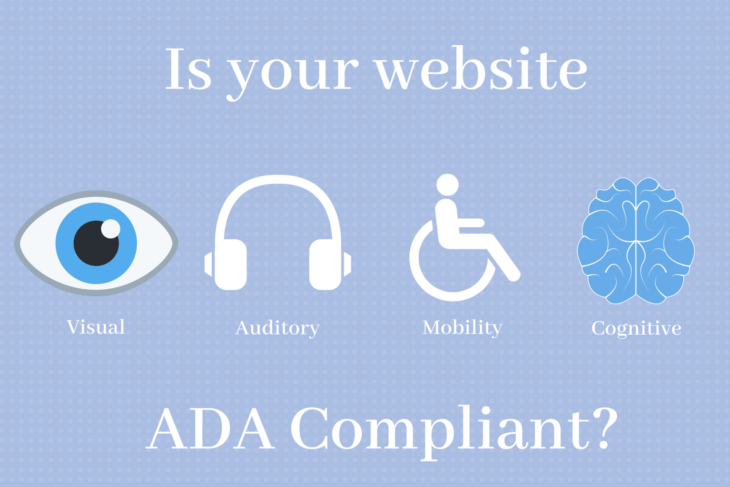The ADA compliance is the Americans with Disabilities Act which was passed on July 26th, 1990. The ADA act strides to make the playing field even for all people, and it primarily focuses on helping people with any sort of disabilities. While at first the ADA act solely focused on physical buildings and required establishments to provide easy access to people with disabilities. The act aimed at giving equal experience to people with disabilities and those who are without any.
Over the years, the ADA act transitioned towards the internet striding to give disabled people equal experience while browsing websites. The ADA act began to include web presence since 2016, and the lawsuits have been on the rise since then. In 2017, there were a total of ~800 lawsuits regarding website compliance, while the numbers rose in 2018 by 117%. The ADA website compliance act focuses predominantly on hotels, restaurants, and retail stores and their online presence, aka their websites.
To put things into simple terms, the ADA website compliance act requires websites to have the necessary code to assist those who have any sort of disability. This includes screen-readers for those who are blind and more.
Contents
Why is the ADA Website Compliance Important?

Source: CommonPlaces
The ADA website compliance act is very important for those who are disabled in any way. You might need to make thousands of changes to your website content and markup for your website to be fully compliant. These changes need to be identified, addressed, and checked over so that your disabled customers or readers can have the same experience as any normal person. The reasons are many as to why your website needs to be ADA compliant, and we are going to address some of them. If you’re interested in making your website ADA compliant, click here.
• Some of your customers are potentially disabled
Navigating a website can be difficult for those who have disabilities. At the current moment, businesses are trying to reduce the barriers between their online presence and people with disabilities. By adhering to ADA compliance standards, you are effectively building brand loyalty amongst those who are disabled on top of the fact that you are helping improve their experience.

Source: Whiteboard Marketing
• Improve customer experience to your website
Many people with disabilities use screen readers to effectively “read” your website content. While a monitor is used to present the website content or information, a screen reader that utilizes a speech synthesizer will read the content for you. Screen readers present all the content and information to the viewer in a structured way. The structure of the content is defined by html code, markup, and meta information located within the general code of your website.
The Levels to ADA Website Compliance

Source: EnVeritas Group
There are currently three levels that define the WCAG 2.0(Web Content Accessibility Guidelines). Those are A, AA, and AAA. The most basic is A, while AAA is meant to accommodate individuals with disabilities. Understanding these levels can be pretty frustrating if you’re not a web developer, however, it is believed that the AA level will soon become the official norm for ADA website compliance.
